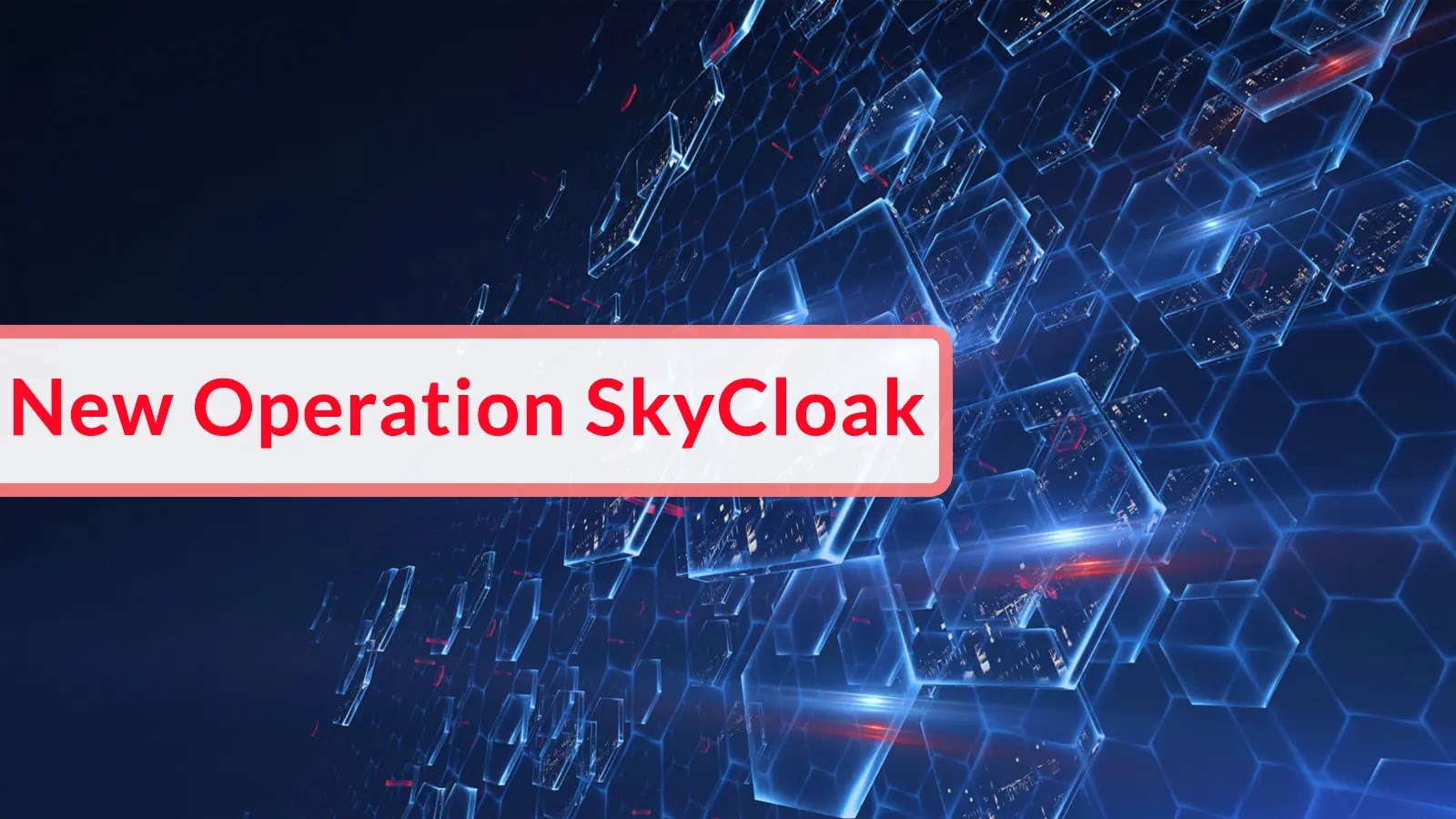
New Operation SkyCloak Uses Powershell Tools and Hidden SSH Service to Unblock Traffic
A new, highly sophisticated cyber campaign, dubbed Operation SkyCloak, is actively targeting military personnel, specifically focusing on Russian Airborne Forces and Belarusian Special Forces. This operation employs a multi-stage infection chain that leverages legitimate PowerShell tools and a hidden SSH service to establish covert remote access, ultimately unblocking communication channels through Tor-based infrastructure. Understanding the intricacies of Operation SkyCloak is crucial for cybersecurity professionals given its advanced evasion techniques and strategic targets.
Understanding Operation SkyCloak’s Modus Operandi
Operation SkyCloak distinguishes itself through its stealth and carefully crafted infrastructure. At its core, the campaign aims to plant persistent remote access capabilities on compromised systems. The initial infection vector for Operation SkyCloak is not explicitly detailed in the provided source, but the subsequent stages reveal a mastery of obfuscation and legitimate tool abuse.
- Multi-stage Infection Chain: This refers to a series of steps an attacker takes to compromise a system. Each stage often performs a specific function, such as initial access, privilege escalation, or persistence, making detection more challenging as different tools and techniques are used at each phase.
- Tor-based Infrastructure: The use of Tor provides anonymity to the attackers, making it extremely difficult to trace their command-and-control (C2) servers and communication channels. This is a common tactic for advanced persistent threats (APTs) seeking to maintain long-term, untraceable access.
PowerShell as a Weaponized Tool
One of the hallmarks of Operation SkyCloak is its extensive use of PowerShell. Attackers frequently weaponize legitimate system tools like PowerShell because they are often whitelisted by security solutions and are inherently part of the operating system. This allows malicious scripts to execute with less scrutiny and blend in with normal system activity.
- Legitimate Tool Abuse: Instead of introducing new, easily detectable malware, the attackers repurpose existing tools on the system. PowerShell, with its extensive capabilities for system administration and scripting, becomes a powerful platform for executing malicious commands, downloading payloads, and managing persistence.
The Covert SSH Service and Obfs4 Bridges
Central to Operation SkyCloak’s stealth is the deployment of a hidden SSH service and the integration of obfs4 bridges. OpenSSH is a widely used and trusted remote login client and server, and its legitimate presence on systems makes its malicious use harder to detect. Obfs4 bridges are a key component of Tor, designed to obscure the fact that a user is connecting to the Tor network, thereby bypassing censorship and network traffic analysis.
- Hidden SSH Service: By configuring a legitimate OpenSSH binary to run as a hidden service, attackers can create a backdoor that appears to be a normal system process, yet provides a robust and encrypted channel for remote access. This can involve modifying service configurations or executing SSH in a clandestine manner.
- Obfs4 Bridges: These pluggable transports scramble Tor traffic to make it look like ordinary web traffic, effectively defeating deep packet inspection and other network-level censorship tools. This allows the attackers to establish covert communication with their C2 infrastructure via Tor without being easily identified or blocked.
Targeted Warfare: Russian and Belarusian Military Personnel
The specific targeting of military personnel, particularly Russian Airborne Forces and Belarusian Special Forces, underscores the geopolitical motivations behind Operation SkyCloak. Such campaigns often aim to exfiltrate sensitive intelligence, disrupt operations, or gain strategic advantage. The highly organized nature of this operation suggests state-sponsored involvement or a well-resourced threat actor.
- Strategic Targeting: Directing attacks against specific military units indicates a clear objective to compromise high-value targets, likely for intelligence gathering or espionage purposes. This type of threat demands heightened security awareness and robust defensive measures.
Remediation Actions
Defending against sophisticated campaigns like Operation SkyCloak requires a layered security approach and proactive threat hunting. Organizations, especially those with high-value targets, should implement the following:
- Endpoint Detection and Response (EDR): Utilize EDR solutions to monitor endpoint activity for anomalous PowerShell execution, hidden services, and network connections to unusual destinations (e.g., Tor relays).
- Network Traffic Analysis: Implement deep packet inspection and network traffic analysis to detect encrypted traffic that may conceal Tor connections, even with obfuscation techniques like obfs4.
- PowerShell Logging and Script Block Logging: Enable comprehensive PowerShell logging, including script block logging, transcription, and module logging. This provides critical forensic evidence for detecting and analyzing malicious PowerShell activity.
- Principle of Least Privilege: Enforce strict adherence to the principle of least privilege for all user accounts and services. This limits the potential damage an attacker can inflict even if they gain initial access.
- Regular Security Audits and Vulnerability Management: Conduct frequent security audits and scans. While the attack doesn’t mention specific CVEs, maintaining a strong patching cadence for all software and operating systems is paramount.
- User Awareness Training: Educate personnel, especially those in targeted sectors, about phishing, social engineering techniques, and the risks associated with opening suspicious attachments or clicking malicious links.
- Whitelisting and Application Control: Implement application whitelisting to restrict the execution of unauthorized executables and scripts, including those that might leverage legitimate tools like PowerShell in a malicious context.
Conclusion
Operation SkyCloak serves as a stark reminder of the evolving landscape of cyber warfare and the sophisticated tactics employed by threat actors. By leveraging legitimate tools, employing multi-stage infection chains, and utilizing anonymous communication channels like Tor with obfs4 bridges, the attackers demonstrate a high level of technical prowess and operational security. For security professionals, understanding these techniques and implementing robust defensive measures are essential to protecting critical infrastructure and sensitive information from such advanced threats. Continued vigilance, advanced threat detection capabilities, and proactive remediation strategies are key to staying ahead of campaigns like Operation SkyCloak.





